For immediate release. Boston, Massachusetts (PRWEB) September 25, 2014
The Adult Stem Cell Technology Center, LLC Presents Its New Company Initiatives At The 2014 BioPharm America International Partnering Conference in Boston, MA
A year after its formation in September 2013, Boston’s Adult Stem Cell Technology Center, LLC (ASCTC) was invited to present its commercialization plans and progress at the 7th Annual BioPharm America™ International Partnering Conference held in Boston from September 22-24. Over the three-day conference, the ASCTC presented to pharmaceutical executives and pharmaceutical investors its one-of-a-kind technologies poised to revolutionize stem cell medicine.
The ASCTC’s (website) Director James L. Sherley’s first BioPharm America™ (conference website) experience got off to a remarkable beginning on Day 1 of the conference. After an impromptu decision to participate in the event’s “Perfect Pitch” competition, which involved about 40 company contestants, ASCTC tied for second place. As one of a few companies in the stem cell and regenerative medicine space at the conference, this success led to some attendees referring to Sherley as “that stem cell guy.” Sherley smiled, “I take it as a fun compliment. I do think it was the unique presence of ASCTC as one of a few stem cell companies present in a sea of drug development companies that contributed to our success.”
However, the ASCTC’s pitch to a panel of Pharma investors was in fact more about drugs than stem cells. Sherley pitched the company’s partnership venture with AlphaSTAR Corporation (ASC; website) located in Long Beach, California. ASC develops computer simulation analyses to predict the integrity failure of complex composite materials used to build aircraft, racing cars, and other high stress vehicles like the space shuttle. The two companies have integrated their respective expertise to produce a first-of-its-kind computer simulation-based technology for identifying, at the beginning of the drug development pipeline, drug candidates that are toxic to tissue stem cells. Such toxicity causes drugs to fail in expensive preclinical studies and clinical trials, and even after marketing.
At the conference, Sherley commented, “I think we are starting to get their [drug companies’] attention now.” In his pitch of the new “AlphaStem” tissue stem cell toxicity technology, he emphasized that the ASCTC projects that this technology could save the U.S. Pharma industry about $4 billion of the estimated $40 billion that it spends on failed drug candidates each year. Besides reducing cost and accelerating the development of needed new drugs, the AlphaStem technology would reduce that exposure of patients to particularly harmful drug candidates.
The ASCTC was not the only company at the conference active within the regenerative medicine space. On the first evening of the conference, ASCTC was one of several guest companies and academic institutions in the regenerative medicine space that were invited to a VIP dinner co-hosted by BioPharm America™‘s producer, EBD Group, and the Alliance for Regenerative Medicine. The guest party dined at the Top of the Hub Restaurant on the top floor of Boston’s Prudential Tower.
BioPharm America™ conferences are designed to arrange many one-to-one meetings among participants of diverse expertise in the international pharmaceutical industry. Over the three-day conference, ASCTC Director Sherley met with Pharma executives, contract research organization directors, Pharma business development consultants, and Pharma investment group partners towards establishing new strategic relationships for the company.
On the final morning of the conference, the ASCTC was one of eleven companies selected to present in the “Next Generation Company” session. Director Sherley focused his presentation on how the ASCTC’s unique expertise in tissue stem cell asymmetric self-renewal gives the company its exclusive position in commercialization of technologies for counting, manufacturing, and monitoring human tissue stem cells. Asymmetric self-renewal is the defining property of tissue stem cells that allows them to maintain the genomic blueprint of human tissues while continuously producing the building block cells of body tissues at the same time. Sherley expressed that asymmetrically self-renewing stem cells in organs and tissues of children and adults will eventually be understood as the fulcrum at the center, between the mature industry of pharmaceutical therapeutics and the emerging industry of cell-based therapeutics. “That’s the ASCTC vision.”


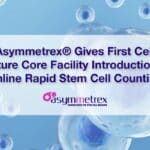
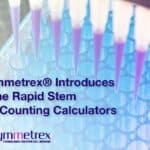
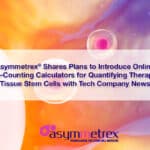
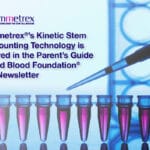
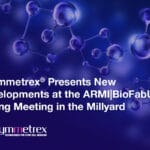
Leave a Reply